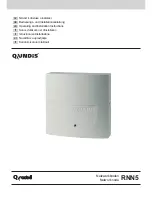
Operation Manual – VLAN
H3C S5100-SI/EI Series Ethernet Switches
Chapter 1 VLAN Overview
1-4
II. MAC address learning mechanism of VLANs
Switches make forwarding decisions based on destination MAC addresses. For this
purpose, each switch maintains a MAC address table, of which each entry records the
MAC address of a terminal connected to the switch and to which port this terminal is
connected, assuming that no VLAN is involved. For the ease of management, a MAC
learning mechanism is adopted on switches. With this mechanism, a switch can
populate its MAC address table automatically by learning the source MAC address of
incoming traffic and on which port the traffic is received. When forwarding traffic
destined for the learned MAC address, the switch looks up the table and forwards the
traffic according to the entry.
After VLANs are configured, a switch adopts one of the following MAC address learning
mechanisms:
z
Shared VLAN learning (SVL), where the switch records all learned MAC address
entries in one MAC address table, regardless of in which VLAN they are learned.
This table is called the shared MAC address forwarding table. Packets received in
any VLAN on a port are forwarded according to this table.
z
Independent VLAN learning (IVL), where the switch maintains an independent
MAC address forwarding table for each VLAN. The source MAC address of a
packet received in a VLAN on a port is recorded to the MAC address forwarding
table of this VLAN only, and packets received in a VLAN are forwarded according
to the MAC address forwarding table for the VLAN.
Currently, the H3C S5100-SI/EI series Ethernet switches adopt the IVL mode only. For
more information about the MAC address forwarding table, refer to the “MAC Address
Forwarding Table Management” part of the manual.
1.1.4 VLAN Interface
Hosts in different VLANs cannot communicate with each other directly unless routers or
Layer 3 switches are used to do Layer 3 forwarding. The S5100-SI/EI series Ethernet
switches support VLAN interfaces configuration to forward packets in Layer 3.
VLAN interface is a virtual interface in Layer 3 mode, used to realize the layer 3
communication between different VLANs, and does not exist on a switch as a physical
entity. Each VLAN has a VLAN interface, which can forward packets of the local VLAN
to the destination IP addresses at the network layer. Normally, since VLANs can isolate
broadcast domains, each VLAN corresponds to an IP network segment. And a VLAN
interface serves as the gateway of the segment to forward packets in Layer 3 based on
IP addresses.
















































